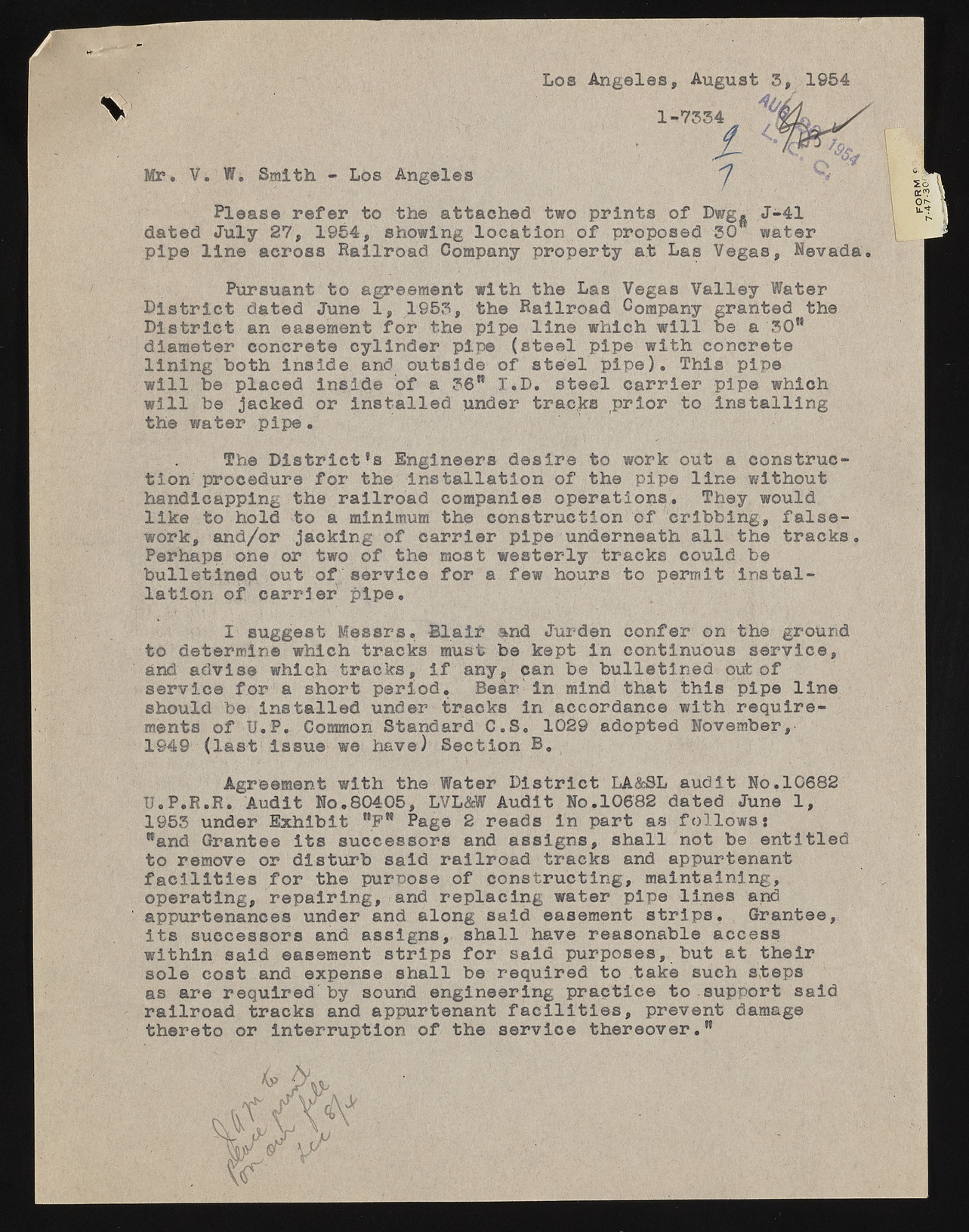Copyright & Fair-use Agreement
UNLV Special Collections provides copies of materials to facilitate private study, scholarship, or research. Material not in the public domain may be used according to fair use of copyrighted materials as defined by copyright law. Please cite us.
Please note that UNLV may not own the copyright to these materials and cannot provide permission to publish or distribute materials when UNLV is not the copyright holder. The user is solely responsible for determining the copyright status of materials and obtaining permission to use material from the copyright holder and for determining whether any permissions relating to any other rights are necessary for the intended use, and for obtaining all required permissions beyond that allowed by fair use.
Read more about our reproduction and use policy.
I agree.Information
Digital ID
Permalink
More Info
Rights
Digital Provenance
Publisher
Transcription
Mr. V. W. Smith - Los Angeles Los Angeles, August 3, 1954 Please refer to the attached two prints of Dwg. J-41 dated July 27, 1954, showing location of proposed 30H water pipe line across Railroad Company property at Las Vegas, Nevada. Pursuant to agreement with the Las Vegas Valley Water District dated June 1, 1953, the Railroad Company granted the District an easement for the pipe line which will be a 30” diameter concrete cylinder pipe (steel pipe with concrete lining both inside and outside of steel pipe). This pipe will be placed inside of a 36” T.D. steel carrier pipe which will be jacked or installed under tracks prior to Installing the water pipe. The District's Engineers desire to work out a construction procedure for the installation of the pipe line without handicapping ths railroad companies operations. They would like to hold to a minimum the construction of cribbing, falsework, and/or jacking of carrier pipe underneath all the tracks, Perhaps one or two of the most westerly tracks could be bulletinecl out of service for a few hours to permit installation of carrier pipe. I suggest Messrs. 81ai£ and Jurden confer on the ground to determine which tracks must be kept in continuous service, and advise which tracks, if any, can be bulletined out; of service for a short period. Bear in mind that this pipe line should be Installed under tracks in accordance with requirements of U.P. Common Standard C.S. 1029 adopted November,- 1949 (last issue we have) Section B. Agreement with the Water District LA&SL audit No.10682 U.P.R.R. Audit No,80405, LVL&W Audit No.10682 dated June 1, 1953 under Exhibit ”F” Page 2 reads in part as follows? "and Grantee its successors and assigns, shall not be entitled to remove or disturb said railroad tracks and appurtenant facilities for the puroose of constructing, maintaining, operating, repairing, and replacing water pipe lines and appurtenances under and along said easement strips. Grantee, its successors and assigns, shall have reasonable access within said easement strips for said purposes, but at their sole cost and expense shall be required to take such steps as are required by sound engineering practice to support said railroad tracks and appurtenant facilities, prevent damage thereto or interruption of the servioe thereover.”

